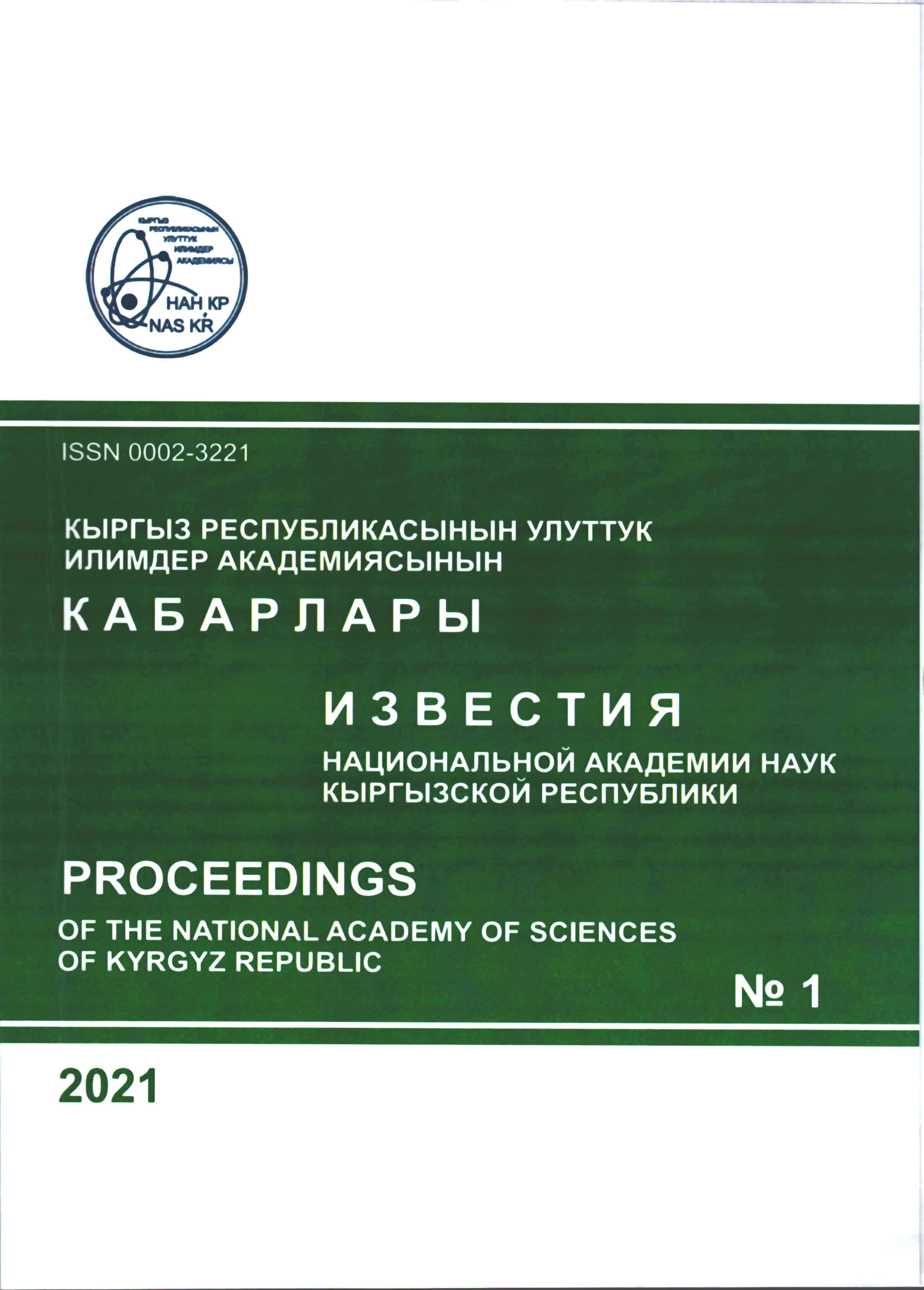THE CONCEPT «MOUNTAIN » IN THE LANGUAGE CONSCIOUSNESS OF THE KYRGYZ
Keywords:
picture of the world, linguistic picture of the world, spatial picture of the world, category «space», concept, concept «mountain», symbol, metaphor, image, background knowledge, etc.Abstract
The article notes that the Kyrgyz language is a historical language that reflects
the consciousness, worldview and culture of the nation. It is believed that the character, lifestyle
and culture of the Kyrgyz people are formed under the influence of the surrounding geographic
environment, climate and are reflected in linguistic information. Linguistic information, which
expresses the consciousness and thoughts of a nation, is expressed in a simple and concise form in
terms of the structure of each regular expression, proverbs, aphorisms, literary texts.
They contain deep philosophical thoughts that inspire. On the basis of scientific views, it was
established that space has a special effect on people’s lives and that the material sources of their
development are expressed through language. The essence of the “mountainous” segment, which
forms the basis of the “space” category in the Kyrgyz linguistic image of the world, is analyzed,
as well as its reflection in the linguistic consciousness of the Kyrgyz people. In linguistics, formed
on the basis of the Kyrgyz national worldview, the “mountain” sign is considered as a concept in
the Kyrgyz linguistic image of the world. The expression of national norms of behavior through
linguistic information is considered in relation to the image of the mountain. The word «mountain»
refers to patience, strength, intelligence, knowledge, goals, time, season, and so on. It was found
to be used as a linguistic symbol, a metaphor that forms a similar relationship with words. The
facts have shown that the word «mountain» is widely used as a linguistic symbol in phraseology,
paremia and literary texts.
References
Акаев А. Вступительное слово // Горы Кыргызстана. – Бишкек, 2001. – С.5.
Ахматова М.А. Концепт «Гор» в Карачаево-Балкарском нарстском эпосе //
Современные проблемы науки и образования. – 2015. -№ 2-3.;
Вежбицкая А. Понимание культур через посредство ключевых слов. – М.: Языки
славянской культуры, 2001. С.283
Гумилев Л.Н. Конец и вновь начало. – М., 1994.
Замалетдинов Р.Р. Национально-языковая картина татарского мира [Текст]: дис. …
д-ра филол. наук / Р.Р.Замалетдинов. – Казань, 2004. – 499 с.
Карасай уулу Х. Камус наамадан жороп. – Бишкек, 1992. -78 б.
Кожомбердиев Т. Кыл чокулар: Ырлар. – Ф.: Кыргызстан, 1988. – 172 б.
Кубрякова Е.С. О понятиях места, предмета и пространства // логический анализ
языка: Язык пространство / Отв. Ред. Н.Д.Арутюнова. Москва.: Языки рус. культуры, 2000.
С. 84-92.
Лотман Ю.М. Внутри мыслящих миров: Человек – текст – семиосфера – история. –
М.,1996. – 464 с.
Осмонов А. Ырлар жыйнагы. I том. Ф.: Адабият, 1982. – 460 б.
Степанов Ю.С. В Трехмерном пространстве языка: Семиотические проблемы
лингвистики, философии, искусства. – М.: Наука, 1985. – 335 с.
Сыдыкбеков Т. Көк асаба. Тарыхый роман. – Ф.: Адабият, 1989. – 464 б.
Томпсон Дж. Первые философы. – М.: Изд-во ин. лит-ры, 1959.- с
Черданцева Т.З. Метафора и символ во фразеологических единицах. // Метафора в
языке и тексте. – М.:Наука, 1988. – 176 с.

